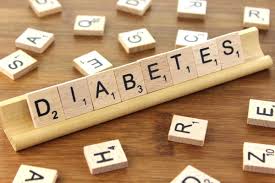Diabetes and cancer share common risk factors, such as obesity, sedentary lifestyles, and aging. These shared factors create a chronic inflammatory state and insulin resistance, promoting an environment favorable for both conditions. Epidemiological studies have consistently associated diabetes with an increased risk of certain cancers, including those of the pancreas, liver, breast, and bladder. The intersection of diabetes and cancer has thus become a focal point in research aimed at repurposing antidiabetic drugs for cancer treatment.
Mechanisms of Action in Cancer Several molecular pathways are shared between diabetes and cancer, such as insulin signaling, AMP-activated protein kinase (AMPK), and the mammalian target of rapamycin (mTOR). These pathways regulate various cellular functions, including glucose homeostasis and cell proliferation. As cancer cells undergo metabolic reprogramming, they exhibit altered energy metabolism, making them susceptible to the effects of metabolic regulators like antidiabetic drugs.
Key Antidiabetic Drugs with Anticancer Potential
Metformin is the most extensively studied antidiabetic drug for its potential anticancer effects. Studies have shown that metformin reduces cancer cell proliferation, induces apoptosis, and improves outcomes when combined with other therapies. It targets key pathways, such as AMPK and mTOR, and has demonstrated efficacy in various cancers, including pancreatic, colorectal, and breast cancers. Despite some promising results, clinical trials have reported mixed outcomes, highlighting the need for further research to optimize its use in cancer treatment.
Sulfonylureas stimulate insulin secretion from pancreatic β-cells and have shown potential anticancer benefits and risks. Some studies suggest sulfonylureas may increase cancer risk due to their role in promoting hyperinsulinemia, which can enhance tumor growth. However, conflicting evidence exists, and further studies are required to clarify the relationship between sulfonylureas and cancer risk.
Sodium-glucose cotransporter 2 (SGLT2) inhibitors have shown promise in inhibiting tumor growth and metastasis in various cancers, including lung, breast, and liver. These inhibitors reduce glucose availability for cancer cells and exhibit mechanisms such as inducing cell cycle arrest and apoptosis. Ongoing clinical trials are exploring their synergistic potential with traditional cancer therapies.
Dipeptidyl peptidase-4 (DPP-4) inhibitors have shown potential anticancer effects by inhibiting tumor growth and reducing inflammation. Retrospective studies suggest that patients using DPP-4 inhibitors may have a lower risk of developing certain cancers, though more research is needed to confirm these findings.
Glucagon-like peptide-1 receptor agonists (GLP-1RAs) and thiazolidinediones (TZDs) have shown both anticancer potential and concerns about increased cancer risk in specific contexts. These drugs' dual roles in regulating glucose metabolism and affecting cancer-related pathways, such as PPAR-γ signaling, warrant further investigation.
While repurposing antidiabetic drugs for cancer treatment presents exciting possibilities, significant challenges remain. Cancer's heterogeneity, combined with the complex interplay between diabetes and cancer, makes it difficult to predict outcomes for specific drugs across different cancer types. Therefore, ongoing clinical trials and preclinical studies are essential to fully understand the potential benefits and limitations of using antidiabetic drugs as anticancer agents.
References
Dhas, Y., Biswas, N., M.R., D. et al. Repurposing metabolic regulators: antidiabetic drugs as anticancer agents. Mol Biomed 5, 40 (2024). https://doi.org/10.1186/s43556-024-00204-z


%20(3).png)

No comments:
Post a Comment